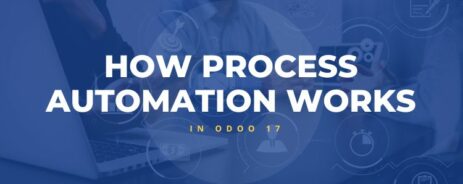
Technical Debt Is a Growing Problem: Here’s How Leaders Can Help
How much is your software development process costing your business?
For many CIOs, it’s an uncomfortable question. Technical debt refers to the consequences of developing software while prioritizing speed over quality. It’s the “quick and dirty” fixes that allow your systems to function, but just barely, and often via workarounds that require changes to your workflow.
Some level of technical debt is inevitable, but what makes debt — well, debt — is that it doesn’t go away without active attention. Over time, it can cripple enterprises.
In a June 2022 McKinsey survey, about 30 percent of CIOs said that they believed that more than 20 percent of their technical budget for new products was diverted to resolving issues related to tech debt. That might be a low estimate: A DZone analysis found that engineers spend 33% of their time dealing with technical debt, about 13.4 hours per week, per developer.
And while lost development time is certainly expensive, it’s not necessarily the most significant consequence of relying on unoptimized software:
- All departments suffer slower output and strained resources. Older software cannot be easily integrated with new technologies, and employees are forced to find novel (read: unoptimized) ways of adapting.
- Businesses become less capable of responding to volatility. An unexpected surge in demand could bypass the “good enough” solutions that kept key systems running.
- Eventually, maintaining old software becomes difficult or impossible. Technologies become less adaptable and more expensive to maintain.
- Poor code can introduce privacy and security compliance concerns.
To address technical debt, stop thinking of technology changes as insurmountable.
The pitfalls of technical debt are well-established, but they’re also difficult to escape. As systems age and  hotfixes become standard operating procedure, systems become less robust, and supporting those systems becomes much more difficult.
hotfixes become standard operating procedure, systems become less robust, and supporting those systems becomes much more difficult.
Counterintuitively, businesses have a tendency to increase their reliance on older systems over time. That’s part of the reason why Southwest Airlines suffered catastrophic operational issues in December 2022 due to the sheer age of their software.
Why wasn’t their technology upgraded? There wasn’t any institutional support.
“It almost became a running joke around the company that we aren’t able to make certain changes because it would involve technology,” one employee told the Dallas Morning News.
That’s a crucial lesson here for business leaders: If technology changes keep getting pushed to the back of the line, the size of the problem grows. Most businesses rely on software, and changing that software often requires C-suite approval. If leaders are too afraid of disruption, technology can’t change — and the technical debt continues to grow.
Switching from legacy systems isn’t easy, but it’s a necessary part of doing business in 2024.
As the old adage says, the best time to plant a tree was 20 years ago, but the second-best time is today. Technology improvements should be implemented as soon as possible after problems are recognized, and legacy systems that cannot be optimized must be replaced.
Of course, this is much easier said than done. Most businesses won’t have to face the growing pains of a major airline with decades-old software, but nevertheless, technology investments can be difficult to make (particularly when “the way we do things seems to work just fine.”)
To make responsible investments that reduce technical debt without assigning your entire budget to system replacement:
- Identify any software or systems that are essential for your current operations. This might include ERPs, CRMs, sales tools, accounting software, and any other resources that are vital for day-to-day business.
- Make a list of workaround practices (i.e., technical debt pain points) that could be optimized or automated. For example, if you’re manually entering data from your decades-old accounting software into your modern ERP, that’s a process that needs automation.
- Work with a development partner that can honestly assess your current systems. Your partner shouldn’t be pushing a particular product — they should be capable of providing a range of solutions for current pain points.
This last point is particularly crucial. At Blue Stingray, we’ve led clients through Odoo upgrades and at-scale eCommerce migrations, but we don’t recommend dramatic solutions for minor problems.
If a workflow issue can be addressed with a custom API or an off-the-shelf solution, we present that option. This can address technical debt effectively without forcing an enormous change in the way the business operates.
Pay down technical debt by resisting “quick fixes” for legacy software.
Your development partner can also help you identify key stakeholders, set realistic timelines, and utilize a phased approach to modernize your systems. Ideally, the process will be designed to minimize disruption (which minimizes the associated costs of the upgrade).
When business leaders take a proactive approach, and acknowledge technical debt as a real problem, change can happen quickly. Just as a “no changes to technology” culture allows technical debt to spin out of control, your debt shrinks when leaders refuse to consider short-term fixes for long-term problems.
And while some amount of technical debt is inevitable, it is possible to develop a sustainable strategy for keeping it under control. The first step: Take it seriously.



